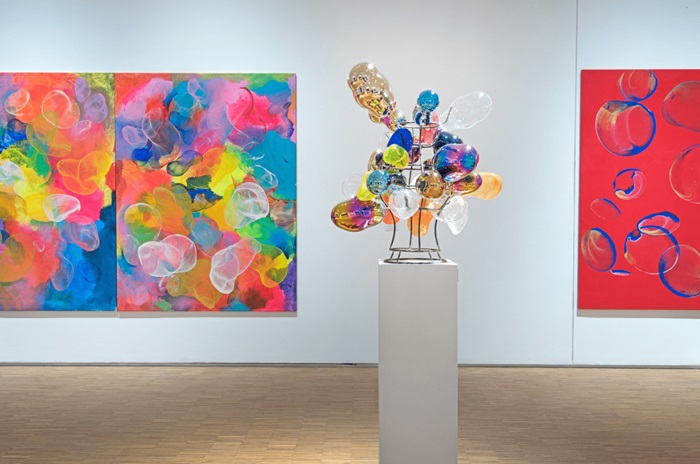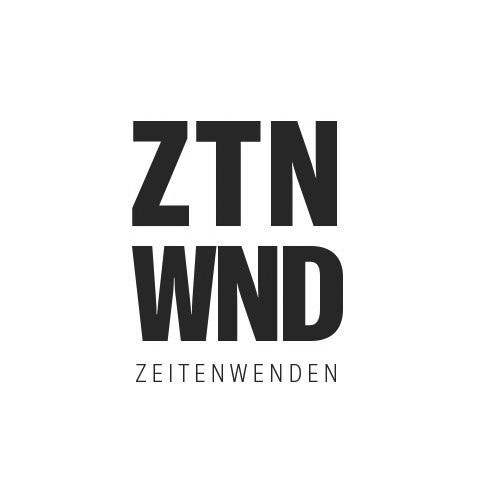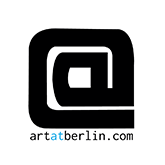A few days ago, the Osthaus Museum Hagen opened the exhibition “Venetian Bubbles 2.5” by artist Georg Dokoupil. This contemporary intervention reflects his many years of tireless research into new materials and techniques.
Image above: Installation view of “Venetian Bubbles 2.5” by Georg Dokoupil at the Osthaus Museum Hagen, 2024. Photography by Deyan Pavlov.
As the winner of the Karl Ernst Osthaus Prize 2024, which is awarded to visual artists every two years, Georg Dokoupil has been invited to present his solo exhibition ‘Venetian Bubbles 2.5’ at the Osthaus Museum in Hagen. Spread across the Neue Galerie and the Zentrale Halle, two of the museum’s largest rooms, it will show the artist’s first large sculptural works made of glass, nine large-format paintings, works on paper and 20 small-format soap bubble paintings that illustrate the lightness and signs of freedom, play and humour in his art.
A key figure in the Neue Wilde movement in Germany and known for his unconventional experiments in the global art scene, Dokoupil has never allowed himself to be pinned down to a particular genre or style. His entire oeuvre is characterised by a break with traditional painting techniques, a constant change of medium and the rejection of a fixed style. Since the late 1970s, he has created works on canvas, often without the usual painterly means. Instead, he uses unconventional materials such as candle soot, car tyres, fruit, foam or soap to create his paintings. The freedom and challenge of integrating everything that art history has to offer into his own artistic world have always been central elements of his work.
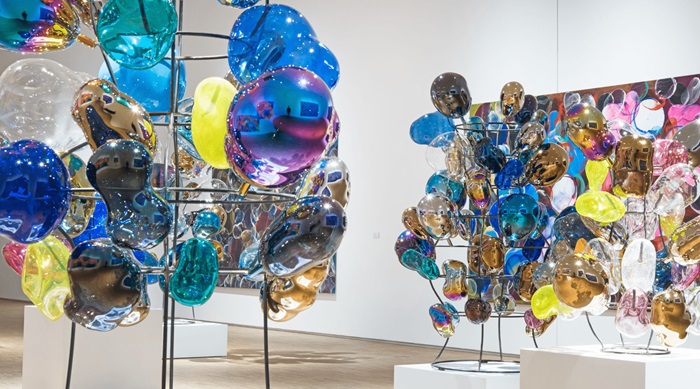
Dokoupil’s exhibition ‘Venetian Bubbles 2.5’ surprises once again: even after more than thirty years of exploring his soap bubble theme, he presents a completely new group of works. These works, which were first shown in the Sale Monumentali of the Biblioteca Nazionale Marciana in Venice and are now being exhibited at the Osthaus Museum Hagen, open up a new approach. Nine large-format paintings (200 x 400 centimetres) depicting coloured soap bubbles reflect the freedom of his technique. Since the late 1970s, he has been mixing soap suds with pigments and blowing the bubbles onto a canvas coated with paint, controlling their bursting to create intricate organic imprints. These unpredictable patterns evoke a moment of spontaneity that questions the permanence often found in painting. At the same time, Dokoupil reflects on human existence. – The breath with which the bubbles are created evokes a fleeting, ephemeral moment.
Also included in the exhibition are seven new glass sculptures, an extension of his famous bubble paintings, in which he uses bottle racks (80 to 200 centimetres high) with playful lightness and a touch of cheekiness to ‘dry’ his bubbles made of coloured glass. The artist calls them ‘Homemade Venetian Bubbles’, honouring their national origin from various crystal glass manufacturers in the Czech Republic, his home country. The ephemeral character of the bubbles enters into an exciting dialogue with the impossible: a bubble captured and preserved at the peak of its existence. A striking juxtaposition of fragility and strength thus also emphasises the recurring existential themes of transience and permanence in Dokoupil’s work.
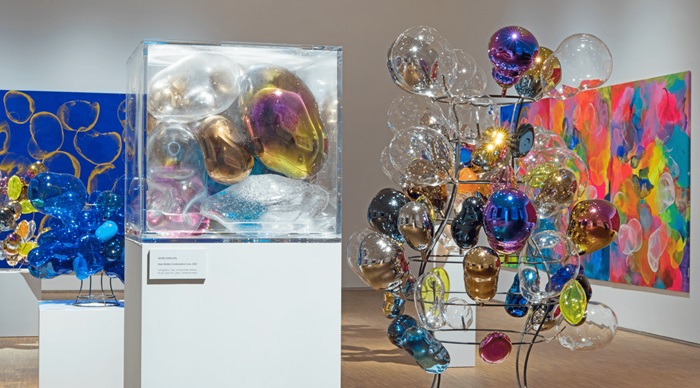
In his most recent sculptures, the “Open Bubbles Condensation Cubes”, which pay homage to his former teacher Hans Haacke and his “Condensation Cube” (1963-1968), Dokoupil succeeds in creating a system within an existing system. He integrates glass bubbles into a box filled with condensed water. Through a physical process, this box develops into an organic unit that incorporates external conditions such as temperature and humidity into the artwork and thus seamlessly integrates the surroundings.
Die Auseinandersetzung mit der Architektur des Museums führte zu einer zusätzlichen Auswahl kleinformatiger Seifenblasen-Bilder, die erstmals in dieser Ausstellung zu sehen sind. Die Vielfalt der Formate und Techniken demonstriert eindrucksvoll die unendlichen Möglichkeiten, die diese Art der Malerei dem Künstler bietet.
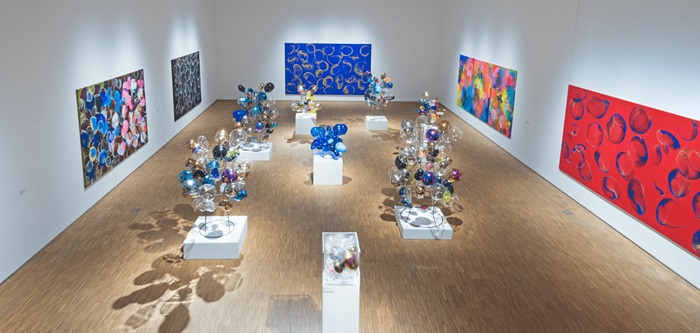
About Georg Dokoupil
Georg Dokoupil’s main theme is painting. He refuses to subordinate himself to a personal style, an attitude or a conventional artistic approach. The open and experimental artist uses unconventional technical inventions to create a wide variety of pictorial worlds: He applies paint to the canvas with a whip or car tyres, he creates candle pictures with soot or binds pigments in soap bubbles and then bursts them on his canvases. The artist captures the ephemeral in his pictorial inventions. Dokoupil’s oeuvre comprises over 60 series and well over 100 invented techniques or styles.
Dokoupil was born in Krnov, the former Czechoslovakia, in 1954. After the Soviet army invaded Prague in 1968, he fled to Germany with his family. From 1976 to 1978, Dokoupil studied fine arts in Cologne, Frankfurt am Main and in New York at the Cooper Union under the conceptual artist Hans Haacke. Dokoupil was a founding member of the German artist groups Mülheimer Freiheit and Junge Wilde, which emerged in the late 1970s and early 1980s.
The group was associated with the legendary art dealer Paul Maenz, who organised Dokoupil’s first solo exhibition in Cologne in 1982. In their shared studio in Cologne’s Mülheimer Freiheit, the Junge Wilden sought a contemporary expression for their art by using a neo-expressive, figurative style of colour-intensive painting with traditional subjects and overcoming the intellectual, reduced formal language of minimal and conceptual art. Dokoupil also taught as a visiting professor at the Kunstakademie Düsseldorf from 1983 to 1984 and in Madrid in 1989.
*** Translated with www.DeepL.com/Translator (free version) ***
Dokoupil entwickelte eine weniger wilde, eher ungewöhnliche Arbeitsweise und fand bald seinen eigenen radikal subjektiven Weg mit individuellen Überlegungen. Mit seiner 1982 auf der documenta 7 in Kassel gezeigten „Buchmalerei“ erregte Dokoupil weithin die Aufmerksamkeit der Kunstwelt. Seitdem waren Dokoupils Arbeiten – neben den frühen Gruppenausstellungen mit der Mülheimer Freiheit – in zahlreichen Einzelausstellungen in Galerien, Museen und an anderen Kulturorten weltweit zu sehen.
About Reiner Opoku
Reiner Opoku is a Berlin-based art consultant and international art mediator. Since the early 1980s, he has curated numerous international art exhibitions and represents a large number of renowned contemporary artists. Reiner Opoku acts as a consultant and initiator to bring artists and creatives together with institutions, galleries and brands by creating collaborative platforms, publications and commissions.
WHEN?
Exhibition dates: Saturday, 30. November 2024 – Sunday, 23. February 2025
Opening times:
Tuesday– Sunday, 12 pm – 6 pm
Closed on Mondays
WHERE?
Osthaus Museum Hagen
Museumsplatz 1
58095 Hagen


